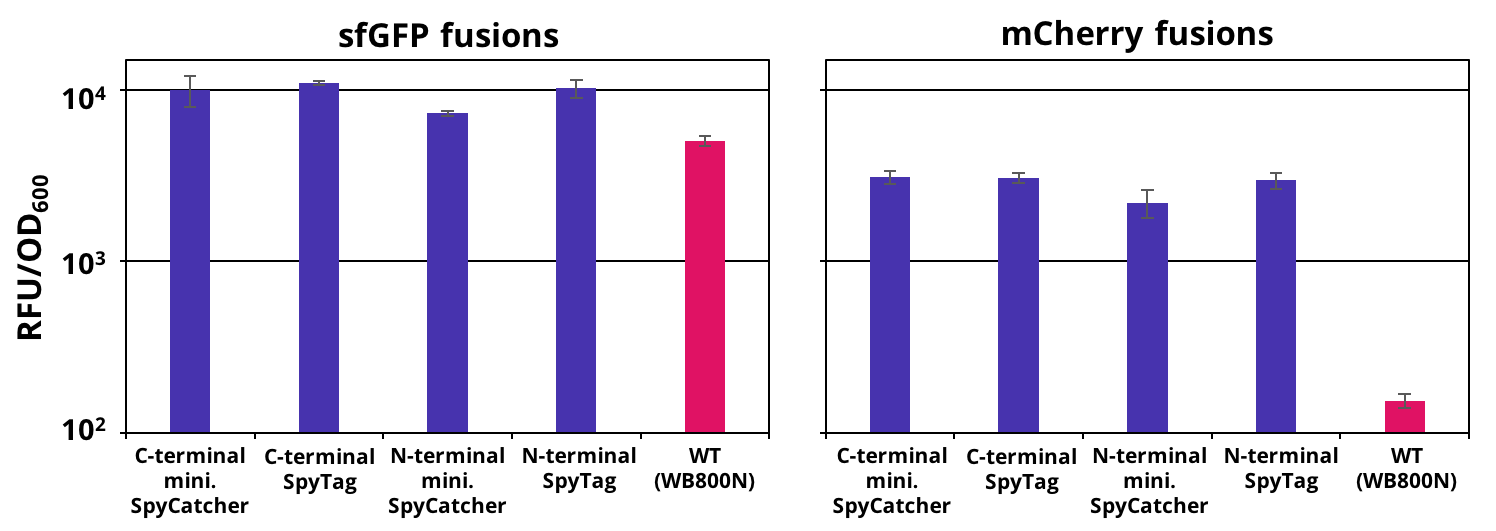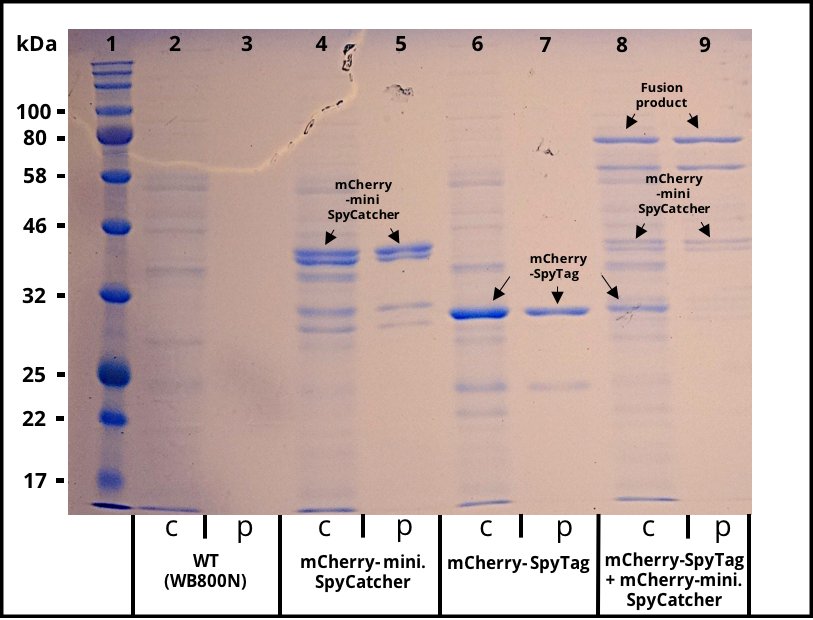Difference between revisions of "Part:BBa K2273035"
| Line 21: | Line 21: | ||
| − | This composite part was used for evalutaion in the [http://2017.igem.org/Team:TU_Dresden/Project/Secretion secretion project] of 2017 TU_Dresden iGEM [http://2017.igem.org/Team:TU_Dresden team]. It codes for a fluorescent reporter protein ([https://parts.igem.org/Part:BBa_K2273034 mCherry]) and a functional tag ([https://parts.igem.org/Part:BBa_K2273016 SpyTag His-tagged]), mediating covalent bonding with | + | This composite part was used for evalutaion in the [http://2017.igem.org/Team:TU_Dresden/Project/Secretion secretion project] of 2017 TU_Dresden iGEM [http://2017.igem.org/Team:TU_Dresden team]. It codes for a fluorescent reporter protein ([https://parts.igem.org/Part:BBa_K2273034 mCherry]) and a functional tag ([https://parts.igem.org/Part:BBa_K2273016 SpyTag His-tagged]), mediating covalent bonding with its tag partner ([https://parts.igem.org/Part:BBa_K2273015 SpyCatcher]). It is optimized for usage in <i>Bacillus subtilis</i>. |
===Design=== | ===Design=== | ||
Revision as of 15:05, 1 November 2017
| Part Information | |
|---|---|
| RFC standard | RFC 25 |
| Fused Tag | BBa_K2273016: Spytag His-tagged |
| Fluorescent Protein | BBa_K2273034: mCherry |
| Submitted by | [http://2017.igem.org/Team:TU_Dresden TU Dresden] |
mCherry with C-Terminal SpyTag and His Tag
This composite part was used for evalutaion in the [http://2017.igem.org/Team:TU_Dresden/Project/Secretion secretion project] of 2017 TU_Dresden iGEM [http://2017.igem.org/Team:TU_Dresden team]. It codes for a fluorescent reporter protein (mCherry) and a functional tag (SpyTag His-tagged), mediating covalent bonding with its tag partner (SpyCatcher). It is optimized for usage in Bacillus subtilis.
Design
A signal peptide (AmyE SP) was fused n-terminally to this construct to induce secretion.

Application
The successful secretion could be proven with a fluorescence assay using the supernatants of B. subtilis (Figure 2). The functionality of the SpyTag/SpyCatcher was proven via SDS-PAGE, using the supernatants (Figure 3).


